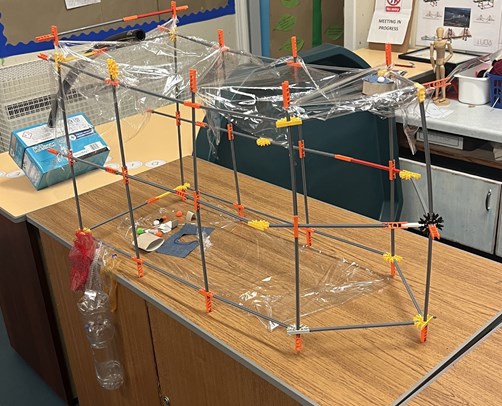Brydekirk Primary School
Project: Tackling River Pollution
As part of the Brydekirk River Savers’ project, they carried out in-depth investigations by taking a visit down to the River Annan riverbank in Brydekirk Village, only a short walk from our school. They investigated many aspects of the surrounding area including the septic tank, trees surrounding the riverbank, the width of the river, the river’s current and the pollution in and around the river. They also watched an insightful documentary all about the River Annan to learn more about its features, area and where it begins and ends.
They used this to inform their solution by creating their design to not only trap the land and sea pollution by a net, but to also suction the pollution through a tube and empty it back into a bin on land, built into the riverbank.
Scientific Poster


Originally, the Brydekirk River Savers were 3 small groups, all with differing ideas, but came together when they recognised that if they took each groups initial design and merging ideas together, an amazing creation would be made to tackle the issue of source to sea pollution.
Brydekirk River Savers’ solution to addressing source to sea marine litter is to catch source litter in a net, and suction this into a bin built into the riverbank. To tackle the pollution that has already made its way into the river, pollution would be gathered in a net, suctioned through a tube, into a boat, and through another tube into the bin on land. This bin would be emptied by local authority refuse collector.
Being a Gold’s Rights Respecting School, Brydekirk Primary School and the Brydekirk River Savers recognise and celebrate their right to have their voices heard and are keen to share their wonderful solution to tackle source to sea pollution.
Prototype

Originally, the Brydekirk River Savers were 3 small groups, all with differing ideas, but came together when they recognised that if they took each groups initial design and merging ideas together, an amazing creation would be made to tackle the issue of source to sea pollution.



